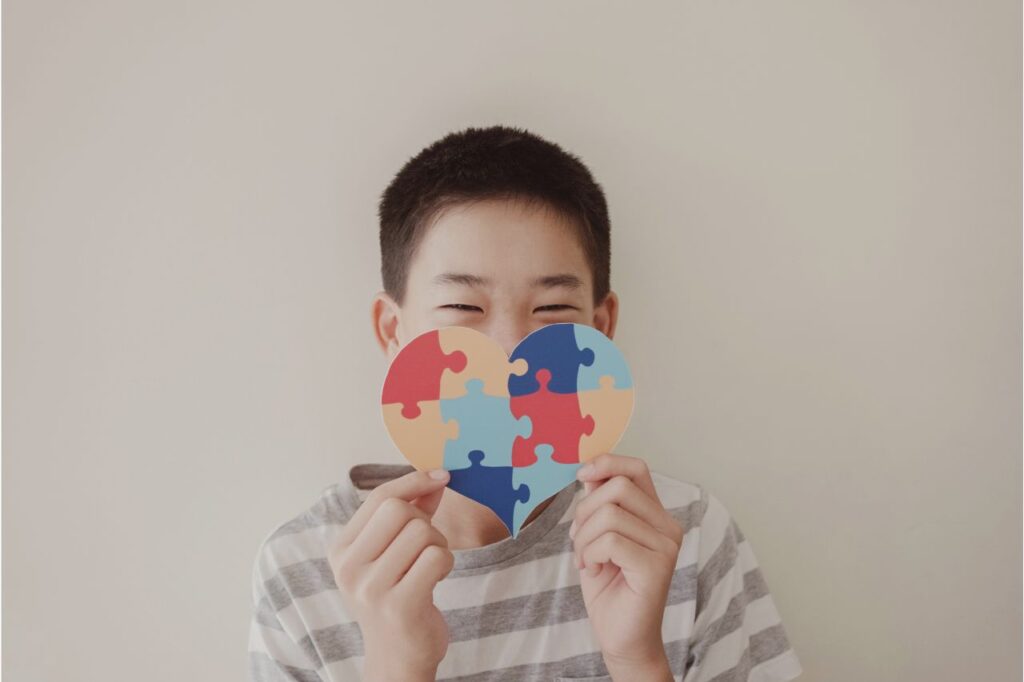What do you need to know about neurodevelopmental services in the Philippines?
- Enables early detection
- Identifies Proper Treatment
April is National Autism Awareness Month. As part of an annual campaign to promote autism awareness and assure that individuals affected by autism can achieve the highest quality of life possible, we are here to tell you all about neurodevelopmental services in the Philippines.
Autism spectrum disorder (ASD) is a medical term used to describe a group of neurodevelopmental disorders. These disorders are characterized by problems with social skills, repetitive behaviors, speech, and nonverbal communication.
There is currently no cure for autism, but therapies and other treatment considerations can help patients alleviate their symptoms and leads to positive outcomes later in life. Continue reading on to learn more about the neurodevelopment services in the Philippines and how this can help with autism.
Enables Early Detection


Although ASD can be diagnosed as early as 15 to 18 months of age, the average age of diagnosis is about 4.5 years. Some patients are not diagnosed until adulthood.
When it comes to autism, multiple studies support that early detection is important for enhancing the life quality of the patient who presents symptoms of neurodevelopmental delay.
If you suspect your child shows signs of the disorder, do not hesitate to seek neurodevelopmental services. The diversity of ASD can make it extremely difficult to diagnose correctly. An autism diagnosis covers a spectrum of skills and impairments. Because of this, the neurodevelopmental disorder can appear different from patient to patient. Some patients with ASD may require extensive support in their daily lives, while others may need less support and, in some cases, live entirely independently. Nonetheless, clinical neurodevelopmental sciences offer comprehensive services designed to detect and assess brain-related disorders, including ASD.
If possible, make sure you seek neurodevelopmental services during the first 2 years of your child’s life. During this stage, the nervous tissues are still forming. It is more “plastic” or adjustable than at older ages, which makes treatments have a better chance of being effective long-term speaking.
Early detection and intervention not only give autistic patients the best start possible but also the best chance of developing their full potential for learning and progress. With early intervention, some patients with autism make substantial progress that they are no longer identified as on the autism spectrum when they are older.
When you seek neurodevelopmental services, several medical experts such as psychologists, pediatricians, and neurologists can provide diagnoses of the condition. It is important that you visit a hospital dedicated to neurosciences and have extensive experience working with the symptoms associated with ASD.
To make a diagnosis of ASD, medical experts rely on numerous information such as the following:
- Patient interviews
- Patient history
- Observations of the patient’s behavior
- Cognitive and language abilities tests
- Medical tests to rule out other neurodevelopmental conditions
- Interviews with parents or teachers who can answer questions about the patient’s social, emotional, and behavioral development
- The Modified Checklist for Autism in Toddlers (M-CHAT) is a common screening tool used by many pediatric offices to be filled out by parents
Identifies Proper Treatment
We cannot stress enough the importance of early detection for ASD. If diagnosed properly, only then can the patient be guided among treatment decisions. Your child can have a higher intelligence quotient than average for a child with autism, better language skills, and better motor skills.
While there is no cure for ASD, there are effective medical strategies that may help control some of their signs and symptoms. Other symptoms can overlap with ASD and other neurodevelopmental disorders such as in the case of attention deficit hyperactivity disorder (ADHD). That being said, proper treatment must be identified to focus on the patient’s specific needs.
Given its wide spectrum, the treatments for ASD will vary from patient to patient as well. There may be medications prescribed to reduce symptoms of anxiety, agitation, hyperactivity, or tics. However, intervention specialists commonly recommend the following treatments:
- Speech and language therapy
- Physical therapy to enhance physical capabilities such as walking, jumping, walking, balancing, and holding objects
- Pediatric occupational therapy to enhance a child’s ability to utilize motor skills for daily living
- Behavior therapy to correct and minimize negative behaviors such as throwing tantrums, hitting, and refusing to form social interactions
In general, the goal of these treatments is to help ASD patients communicate better, reduce anxiety in social settings, and lessen other challenging behaviors.
Key Takeaway
While there is no cure for ASD, several treatment options are available to help patients navigate their daily lives. As part of the National Autism Awareness Month, we are here to tell you that early detection is extremely important for patients with ASD.
At Perpetual Help Medical Center-Las Pinas, we believe that every ASD patient should be offered neurodevelopmental services in the Philippines.
Our Neurosciences Complex, led by our medical experts, is fully capable of performing effective developmental therapies which address symptoms and educate patients on how to have happy and functional lives. We also provide a good support system for our patients and their families to achieve a life free from stress, hopelessness, fear, and impatience.
Contact our staff to learn more about it. Call us at (+632) 8874-ALTA | (+632) 8874-8515 or visit us at Alabang-Zapote Rd., Pamplona III Las Pinas City, Philippines 1740.

